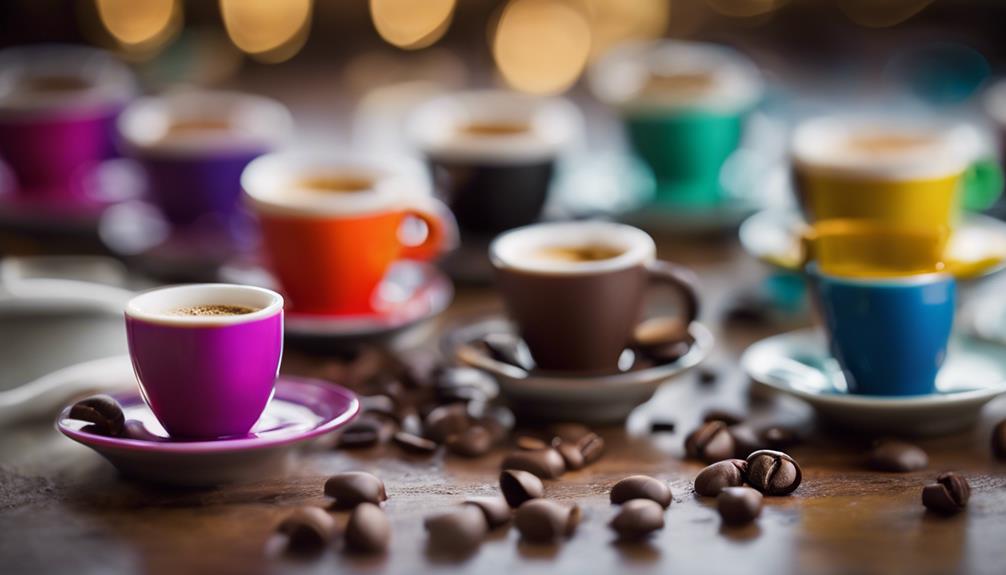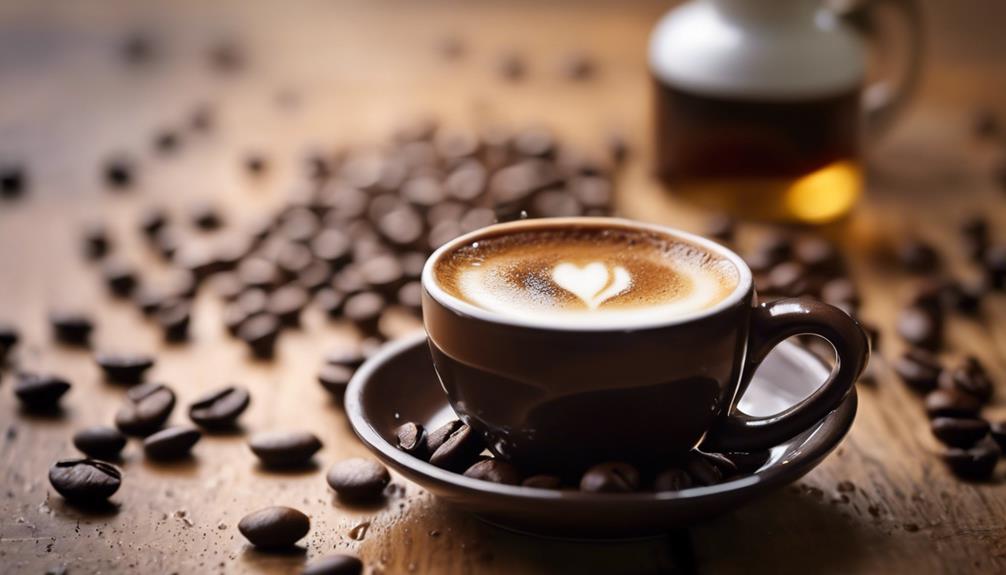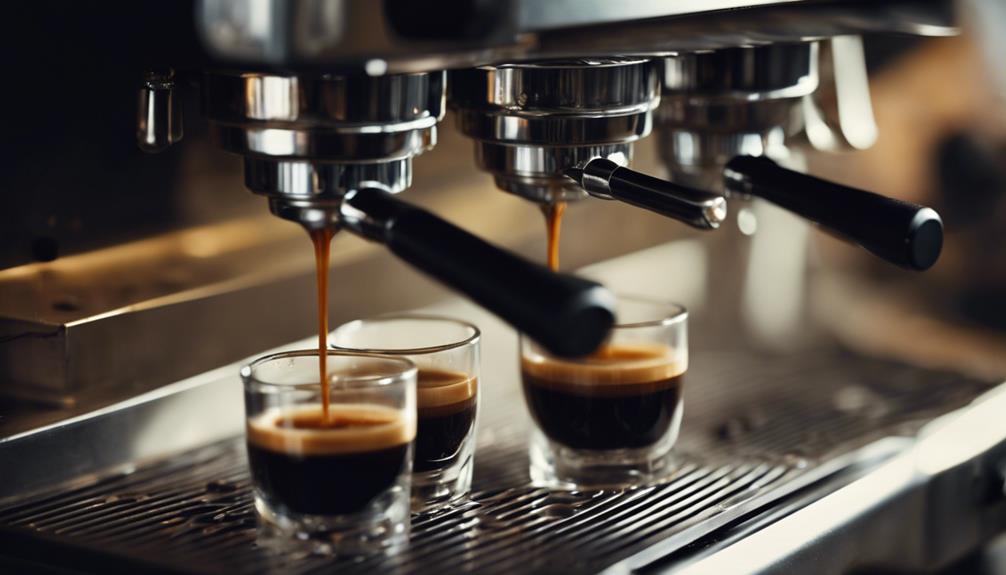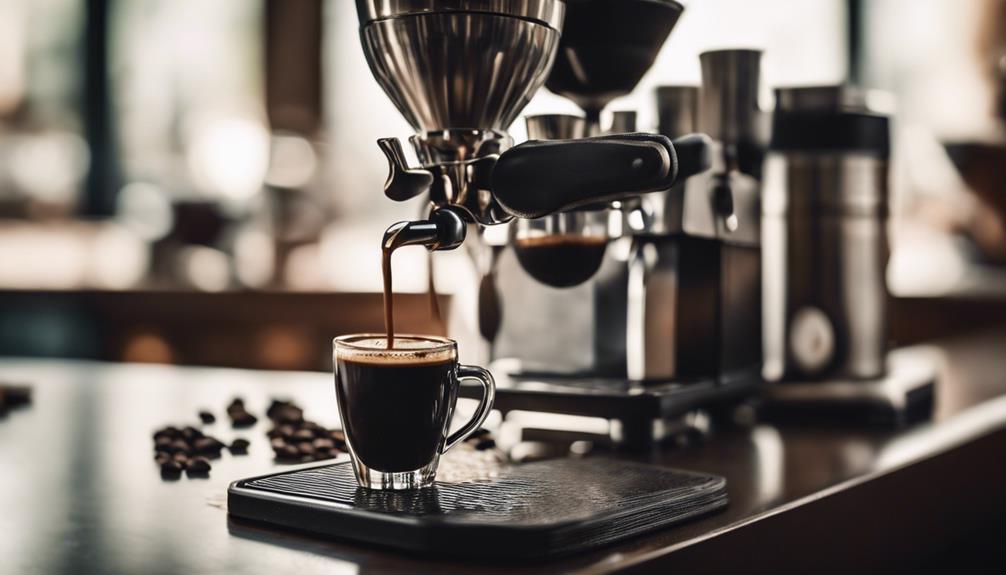Espresso shots can last 24 to 72 hours in the refrigerator, while still maintaining their peak flavor. To keep them as fresh as possible, consider freezing them in ice cubes, storing them in sealed containers, and properly storing the beans. It’s best to avoid reheating them to maintain their original taste. Keeping them in the fridge at a temperature of 35-40°F helps preserve their freshness, and using glass or stainless steel containers for storage is recommended to avoid any flavor contamination that plastic containers might cause. Another option for extending freshness is storing them in ice cube trays. For more tips on preserving quality, enhancing flavor, and extending lifespan, there are various resources available to explore further.
Key Takeaways
- Espresso shots last 24-72 hours in the fridge.
- Use airtight containers to maintain freshness.
- Consider freezing in ice cube trays for longer storage.
- Optimal freshness: 0-24 hours excellent, 24-48 hours very good, 48-72 hours good.
- Prevent exposure to odors and moisture to retain flavor.
Shelf Life of Espresso Shots
To maximize the freshness of your espresso shots, store them in the fridge for 24-72 hours. The shelf life of espresso shots is best preserved when kept in an airtight container.
By sealing them in an airtight container, you prevent exposure to external odors and moisture, maintaining the rich flavor of your espresso shots for a longer period. This method helps retain the crema and aroma, ensuring a delightful coffee experience whenever you indulge in a shot.
When stored in the fridge, espresso shots maintain their quality and taste for up to three days. The cool temperature slows down the oxidation process, which can degrade the flavor of the espresso.
Fridge Storage Duration for Espresso Shots
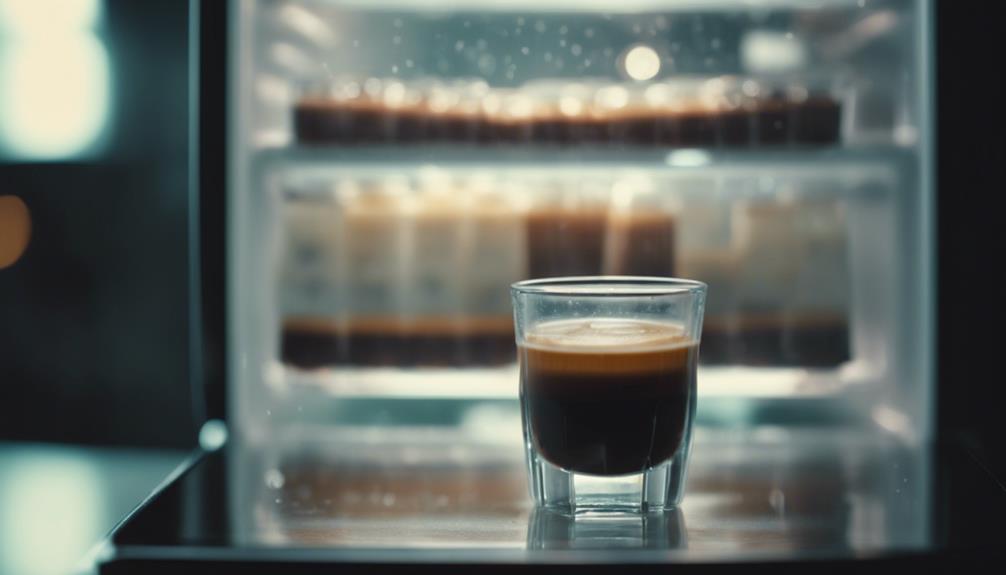
Espresso shots stored in the fridge maintain peak flavor for 24-72 hours. Storing your shot of espresso in the fridge can help maximize its freshness, allowing you to enjoy it for up to 3 days while still retaining its quality. To help you understand the best fridge storage duration for espresso shots better, take a look at the table below:
| Time in Fridge | Espresso Shot Quality |
|---|---|
| 0-24 hours | Excellent |
| 24-48 hours | Very Good |
| 48-72 hours | Good |
Fridge storage is an ideal short-term solution for keeping your espresso shots fresh. If you plan to store them for longer periods, consider freezing your espresso shots in ice cube trays for extended freshness. By utilizing your fridge wisely, you can maximize the lifespan of your espresso shots and make sure that each sip is as delightful as the first.
Maximizing Espresso Shot Freshness
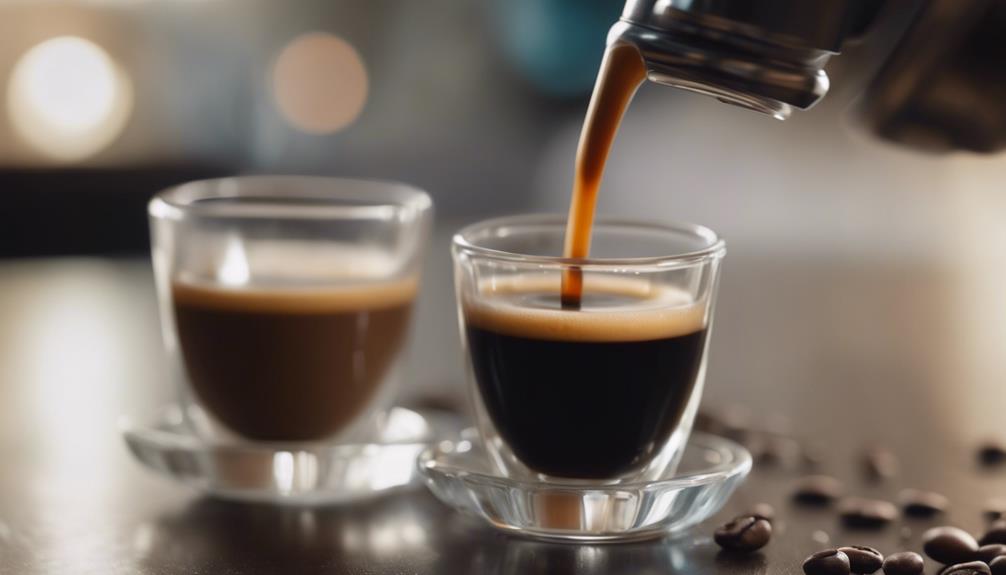
Maximize the freshness of your espresso shots by utilizing proper storage techniques. To keep espresso tasting its best, consider freezing espresso shots in espresso ice cubes. This method not only helps extend the lifespan of your shots but also prevents dilution when added to drinks.
When storing espresso shots, make sure they're kept in properly sealed containers to slow down oxidation and maintain quality. Remember, stale espresso loses its crema on top and intensity quickly, so it's important to store them correctly.
Additionally, to enhance the freshness of your espresso shots, consider the quality of your coffee beans. Freshly ground beans contribute significantly to the flavor and crema of your espresso. By storing coffee beans in a cool, dark place and grinding them just before brewing, you can elevate the overall taste experience of your espresso shots.
Paying attention to these details will help you savor the rich flavors and aromas of your espresso for longer periods.
Extending Espresso Shot Lifespan
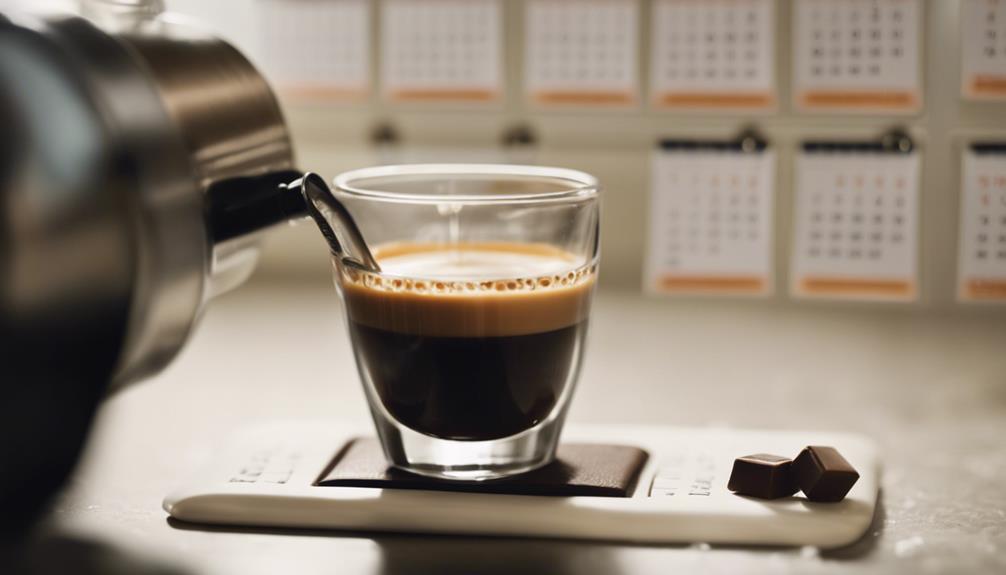
Extend the lifespan of your espresso shots by implementing proper storage techniques.
When storing espresso shots in the fridge, consider freezing them in an ice cube tray. This method helps preserve the taste and quality of the espresso for a longer period compared to simply refrigerating them. By freezing espresso shots into cubes, you can conveniently pop them out as needed, ensuring freshness each time.
The ice cube tray technique not only extends the lifespan of your espresso shots but also prevents flavor degradation that can occur when leaving them in the fridge for too long.
Remember that the best freshness period for espresso shots in the fridge ranges from 24 to 72 hours. Utilizing the ice cube tray method can help you make the most out of your espresso shots, allowing you to enjoy their rich flavor for an extended time.
Preserving Espresso Quality in Fridge
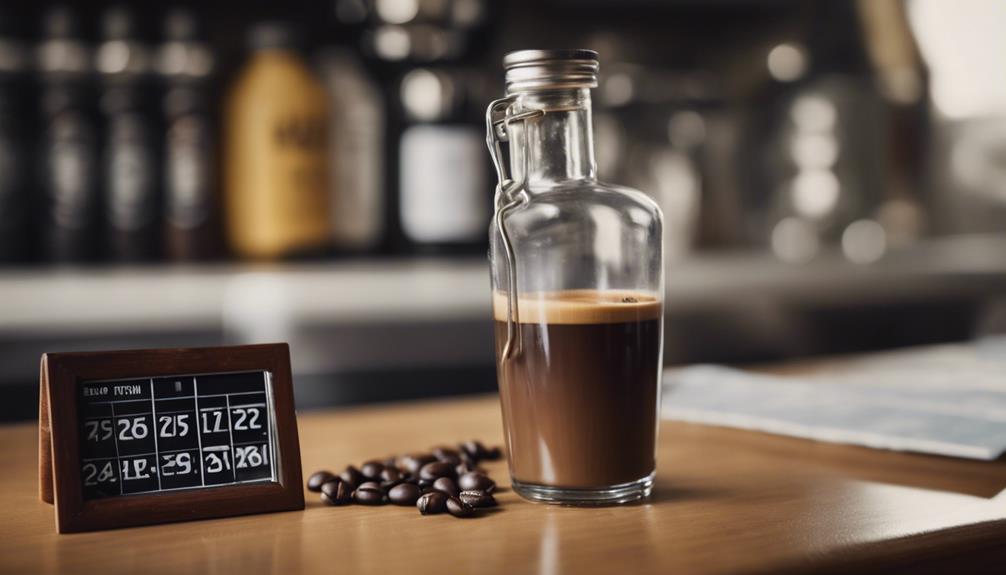
To preserve the quality of your espresso shots in the fridge, consider the impact of temperature on flavor retention. Choose airtight storage containers for freshness. Reheat shots carefully to maintain taste integrity.
Fridge Temperature Impact
Maintaining a consistent temperature between 35-40°F in your fridge is crucial for preserving the quality of stored espresso shots. Fluctuations in fridge temperature can impact the freshness and taste of your espresso. To guarantee that your espresso shots maintain their flavor, storing them properly sealed in the fridge and consuming them within 24-72 hours is necessary. The fridge environment slows down oxidation, which can degrade the quality of your espresso shots over time. By keeping your espresso shots in the fridge at a stable temperature, you can extend their shelf life while preserving their freshness.
| Fridge Temperature (°F) | Impact on Espresso Shots |
|---|---|
| Below 35°F | Risk of freezing, altering taste |
| 35-40°F | Ideal range for freshness |
| Above 40°F | Accelerated loss of flavor |
Maintaining a temperature between 35-40°F ensures your espresso stays fresh and flavorful for longer periods.
Storage Container Choice
Selecting the right storage container is crucial for preserving the quality of espresso shots in the fridge. When it comes to storing your brewed espresso, making the right choice can make a significant difference in maintaining its flavor and freshness.
Here are some key points to keep in mind:
- Airtight Glass or Stainless Steel: Opt for airtight containers made of glass or stainless steel to guarantee the preservation of your espresso shots in the fridge.
- Avoid Plastic Containers: Plastic containers may absorb odors and flavors, impacting the taste of your espresso over time.
- Prevent Flavor Contamination: Glass containers are ideal for preventing flavor contamination and preserving the freshness of your espresso shots.
- Durability of Stainless Steel: Stainless steel containers offer durability and non-reactive properties, helping to retain the quality of your espresso even when stored in the fridge.
Reheating Espresso Shots
When it comes to preserving the quality of your brewed espresso shots in the fridge, reheating them isn't recommended due to potential alterations in taste caused by oil separation.
Reheating espresso shots can lead to a bitter flavor, resulting in a less enjoyable drinking experience. The process of reheating can cause the oils in the espresso to separate, impacting the overall flavor profile.
Bitterness is a common outcome when reheating espresso shots, affecting the taste that you initially savored. Once espresso shots are brewed, it's advisable to avoid reheating them to maintain their original taste.
Instead of reheating, consider alternative storage methods to maintain the quality of your espresso shots without compromising their flavor.
Tips for Storing Espresso Shots
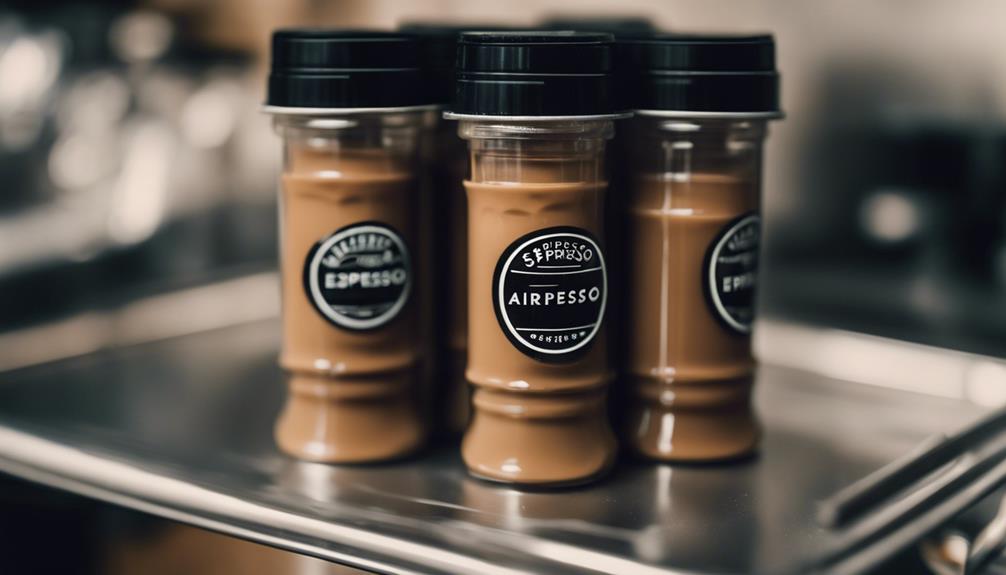
To properly store espresso shots, make sure you seal them in an airtight container to maintain freshness and prevent oxidation.
Here are some tips for storing your espresso shots effectively:
- Use an Airtight Container: Keep your espresso shots in an airtight container to preserve their flavor and aroma.
- Refrigerate Within 30 Minutes: Store your espresso shots in the fridge within 30 minutes of pulling the shots to maintain quality.
- Avoid Light and Air Exposure: Protect your espresso shots from light and air exposure to prevent flavor degradation.
- Label and Date: Clearly label and date your stored espresso shots to track freshness and consumption.
Frequently Asked Questions
What Is the Shelf Life of an Espresso Shot?
When considering the shelf life of an espresso shot, various factors come into play. The best flavor of an espresso shot typically lasts 24-72 hours in the fridge. However, beyond this timeframe, the quality starts to deteriorate.
To prolong their freshness, freezing espresso shots in ice cube trays can be a useful trick. Stale espresso shots lose their crema, flavor, and aroma, emphasizing the importance of proper storage to maintain their taste.
How Long Does Espresso Last After Drinking?
Espresso should be consumed within 2 hours for best taste.
When stored in the fridge, it can last 4-5 days, but its flavor changes, becoming more bitter and acidic.
Crema fades as freshness diminishes.
Avoid room temperature espresso for safety.
How Long Does Cold Brew Espresso Last in the Fridge?
Cold brew espresso typically lasts in the fridge for about 1 week. However, the flavor may start to decline after 3-4 days. To savor the best taste, it's recommended to enjoy your cold brew espresso within the first few days of refrigeration.
Keeping it sealed in a container helps preserve its freshness. Even after a few days, cold brew espresso remains a versatile base for various coffee drinks.
How Long Does Espresso With Milk Last in the Fridge?
Espresso with milk typically lasts 24-48 hours in the fridge, depending on milk freshness. To keep it fresh, store in an airtight container.
Watch for any odd smells or tastes and give it a stir before sipping. Don't let it sit for more than two days to avoid spoilage.
Are Espresso Shots and Regular Espresso the Same in Terms of Shelf Life in the Fridge?
Yes, espresso shots and regular espresso have the same shelf life when stored in the fridge. For optimal freshness and flavor, it is recommended to consume them within 1-2 weeks. Proper espresso storage in fridge can help maintain its quality for a longer period of time.
Conclusion
So, next time you find yourself with some leftover espresso shots, remember that they can last in the fridge for up to 24 hours. By following proper storage techniques and keeping them sealed tightly, you can enjoy your espresso at its freshest.
Just like a fine wine, espresso shots are best when enjoyed promptly to savor their full flavor potential.
So, drink up and savor every last drop!

